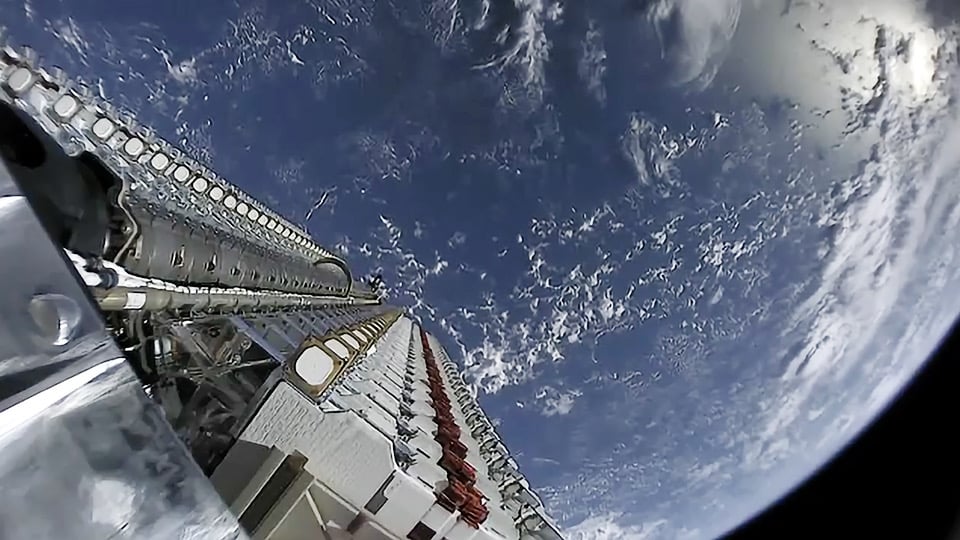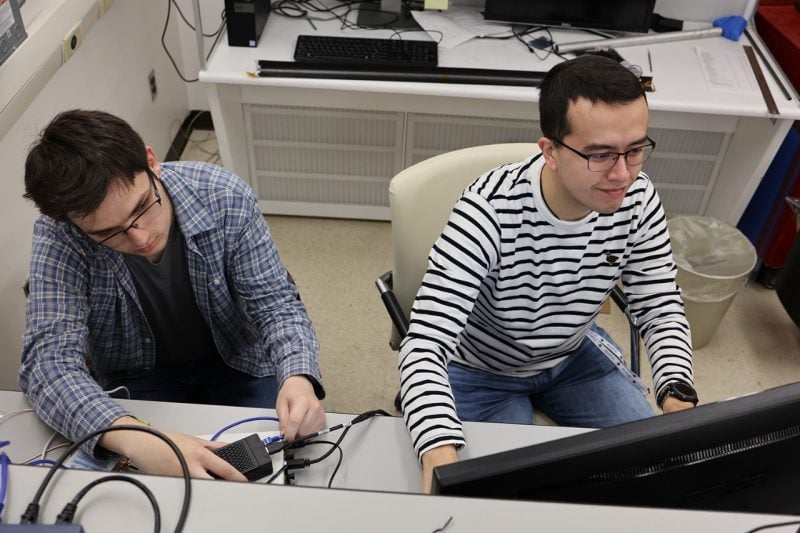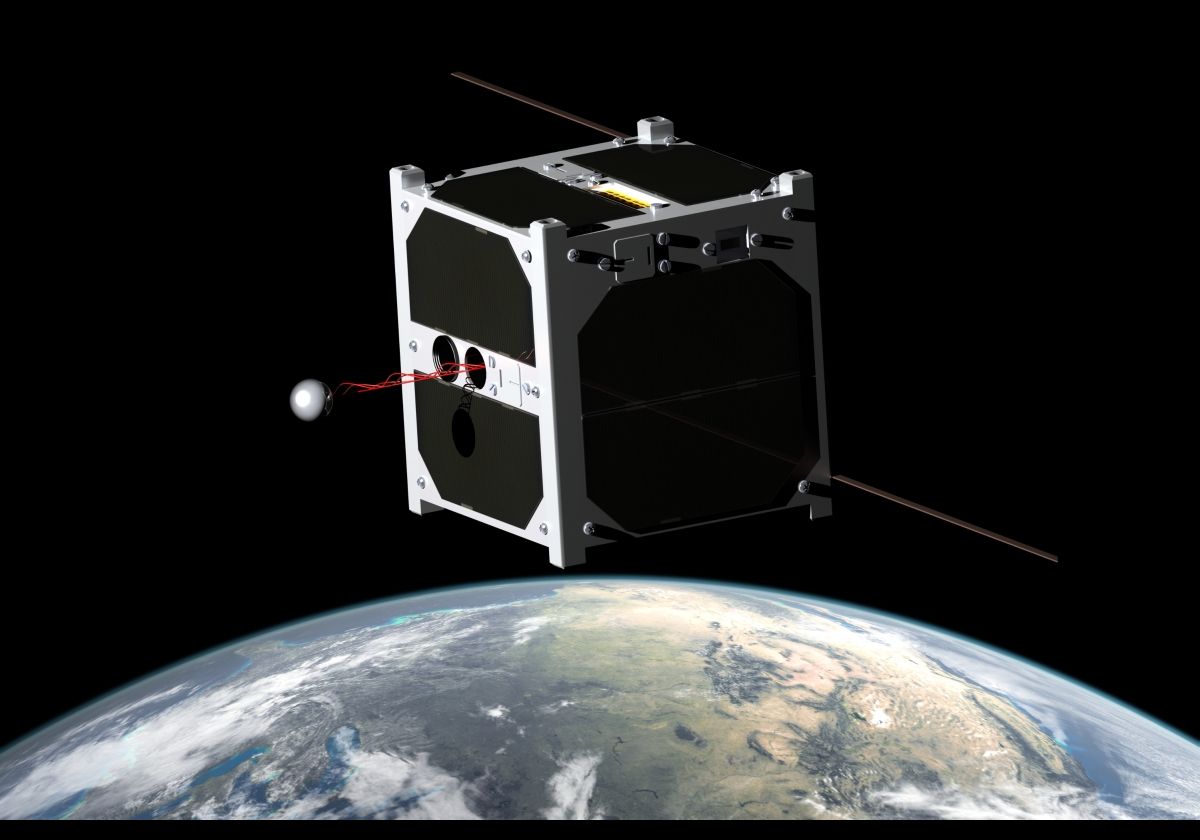The race is on to provide high speed satellite internet to the Earth’s most remote areas.
New tech companies such as Starlink, One Web, and Amazon’s Kuiper are competing with traditional, established “satcomm” companies such as Thuraya and Inmarsat to provide global high speed, low latency satellite internet across the globe.
These new mega-constellations rely on tens of thousands of small low earth orbit satellites flying at a few hundred miles altitude.
Virginia Tech and George Mason University have teamed to develop distributed, mobile space and terrestrial networking infrastructure for multi-constellation coexistence. Image credit: Mohamed Kassem, University of Surrey.
Network interconnectivity is a basic building block for providing end users the fastest, more reliable coverage. While all these mega-constellations are driven to provide high quality of service, they do not currently connect to or interact with one another.
Virginia Tech and partners from George Mason University have been awarded a $2 million grant from the National Science Foundation (NSF) to change this.
In a project funded by the National Science Foundation, researchers will develop an open-source cyber-infrastructure and new space-based networking technology intended to forge connections among satellite networks around the globe.
Through the agency’s Computer and Information Science and Engineering Community Research Infrastructure (CCRI) program, researchers will develop distributed, mobile space and terrestrial networking infrastructure for multi-constellation coexistence.

Starlink satellites before deployment – illustrative photo. Image credit: SpaceX
Principal investigator Jonathan Black and fellow Virginia Tech engineering faculty have teamed with George Mason University to develop a network test bed called SpaceNet for the industry standard technology behind internet satellite constellations.
This project is built on the initial trans-Atlantic test bed developed through a Commonwealth Cyber Initiative-supported program in collaboration with the University of Surrey in the United Kingdom.
“The NSF grant will support open-source cyber-infrastructure development and enable research on the creation of a new space-based networking technology that will connect networks from the surface of the Earth to the moon,” said Black, a professor in the Kevin T. Crofton Department of Aerospace and Ocean Engineering.
“The goal is to open up these networks to all, uniting separate, independent constellations and encourage broad adoption of this technology.”
The research team will investigate methods, protocols, standards, and new technologies by which various satellite constellations and the networks they host communicate directly with others and themselves, creating a common framework for inter- and intra-constellation communications. A hardware-in-the-loop test bed currently in early development will set industry standard technology behind internet satellite constellations, optimize routing protocols, and ensure the protection of users and communications.

Undergraduate Thomas Wheeler (at left) and Ph.D. candidate Bruce Barbour work on the hardware-in-the-loop test bed that emulates the changing connectivity of a mega-constellation at scale. Photo by Jama Green for Virginia Tech.
Can you hear me now?
While there are billions of internet users, most don’t think twice about how their connections are routed or what network they are using – unless of course the signal is weak or drops out entirely. On land, if one cell tower or access point is in high demand, traffic is automatically rerouted to another one nearby or the provided data rates drop to accommodate additional users.
In stark contrast, space-based communications are siloed. Mega-constellations of satellites follow their own operational models and standards, have unique communications protocols, and simply don’t connect to satellites outside their constellation.
Mega-constellations consist of small low earth orbit satellites orbiting at a few hundred miles altitude as opposed to the previous generation of large geostationary communications satellites at ranges of over 22,000 miles. Shorter distance allows for lower power devices to connect directly to the satellites and the networks to achieve lower average latency.

Cubesats, or nanosatellites like this one form the basis of large satellite constellations. Image credit: Erik Kulu, University of Tartu via Wikimedia, CC BY 3.0
However, the low earth orbit position means a single satellite is only overhead for a few minutes on average, requiring new links to be established dozens of times per hour. This fast-changing network topology with shifting connectivity and latencies creates challenges in routing and transport protocols, requiring re-architecting in near real-time.
By exploring how mega-constellations might interconnect without revealing private constellation or network data, we move one step closer toward creating the equivalent of interdomain routing for space networks.
“Through development of the core infrastructure and implementing cybersecurity protocols, we hope to demonstrate the value and practicality of an open-sourced inter-constellation network that has benefits on a global scale,” said Black.
Reach out and touch someone
Earlier this year, with support from the Commonwealth Cyber Initiative, the team at Virginia Tech partnered with the University of Surrey to build the world’s first hardware-in-the-loop test bed that emulates the changing connectivity of a mega-constellation at scale.
The first phase includes an initial prototype with hardware at both universities, able to test and validate communication to one another as well as with virtual satellites.
Moving forward, the NSF grant will support a second phase of the test bed, called SpaceNet, and further development of the network infrastructure over the course of three years.
The research team will build a testing environment that accurately models the network and dynamics; execute routing and re-routing data link tables on the fly, scaled to multiply-redundant algorithms and architectures; develop satellite-like lab hardware for testbed nodes; and incorporate virtual nodes and remote access for government, industry, and academic researchers.
To ensure that future space communications remain secure from hacking or cyber-threats, the team also will investigate software vulnerabilities and the physical security of satellites, ground stations, and other space infrastructure components, as well as develop management strategies for space infrastructure.
According to research associate Samantha Kenyon, the team plans to build up the infrastructure and bring in a cross-section of multidisciplinary experts and technologies into the test bed.
Faculty from [email protected], a research group within the Bradley Department of Electrical and Computer Engineering at Virginia Tech, will bring expertise in communications networks, protocols, and 5G network implementations. Faculty from the aerospace and ocean engineering department will take point on the test bed space-traceable hardware and system dynamics.
Faculty at George Mason University will help integrate the hardware-based 5G terrestrial network test bed and virtual constellation network. These capabilities will greatly enhance the SpaceNet platform and allow users and researchers to conduct multi-constellation networking and satellite-terrestrial experimentation.
“While I am eager to see what we will be able to achieve in our test bed technology, the exciting part is how we can organize and form a coalition of researchers, not only across departments at Virginia Tech but with collaborators at universities across the commonwealth,” said Kenyon.
“As a group, we can address all these complex research questions and get more people engaged in the development of the infrastructure.”
Source: VirginiaTech

